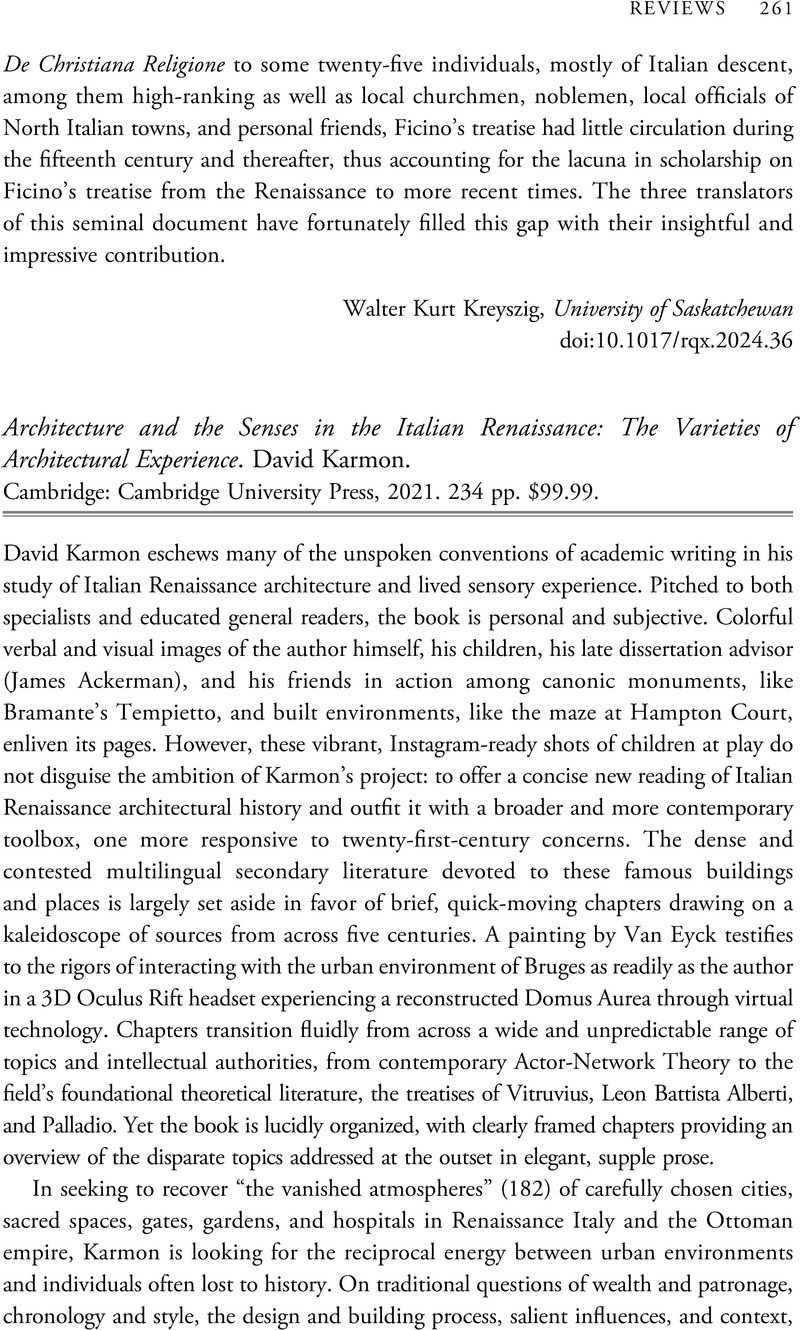No CrossRef data available.
Article contents
Architecture and the Senses in the Italian Renaissance: The Varieties of Architectural Experience. David Karmon. Cambridge: Cambridge University Press, 2021. 234 pp. $99.99.
Review products
Architecture and the Senses in the Italian Renaissance: The Varieties of Architectural Experience. David Karmon. Cambridge: Cambridge University Press, 2021. 234 pp. $99.99.
Published online by Cambridge University Press: 24 April 2024
Abstract
An abstract is not available for this content so a preview has been provided. Please use the Get access link above for information on how to access this content.

- Type
- Review
- Information
- Copyright
- Copyright © The Author(s), 2024. Published by Cambridge University Press on behalf of The Renaissance Society of America



